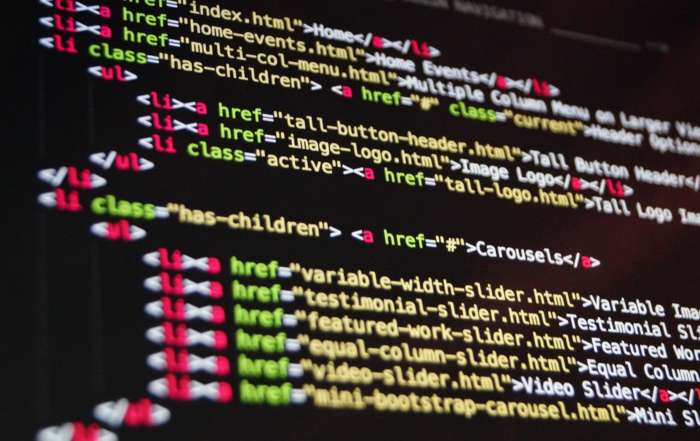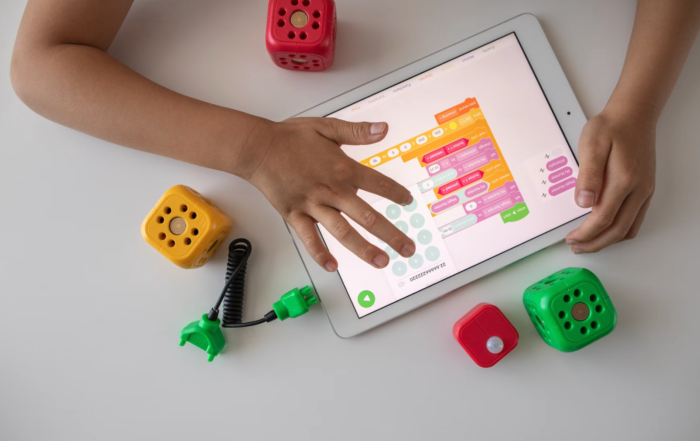Digital technology is a phenomenon that, quite frankly, terrifies some parents. Though we know what an incredible tool it can be, we also know that danger lurks many corners of the Internet. Regardless, technology has become a part of our daily lives, and will certainly be an important part of our children’s lives as they grow into adults. Because of this, parents need to help their children navigate the virtual world just as much as they help them navigate the physical world around them. In doing so, they not only ensure their child’s safety, but also promote a sense of responsibility within their children. Here are some ideas for how to go about this.
Set a Purpose for Use
Every single tool invented throughout human history is, by definition, a piece of technology. From a simple hammer to the newest iPad, these tools all exist because they make certain tasks much easier to perform. However, if taken out of context, these tools can be utilized for actions outside of their intended use. Just as a hammer can be misused as a weapon, computers and mobile devices can be used in counterintuitive, and counterproductive, ways. It’s up to parents to show their children just how great a tool computers and mobile devices can be – and how to stay focused on using them correctly.
For Entertainment
There is no doubt that computers have high entertainment value. From hysterical cat videos on YouTube to the many addicting games available throughout the Internet, computers and mobile devices have a lot to offer to those looking to kick back and relax for a bit.
Of course, much like television, the web offers entertainment that is valuable and enlightening – and it also offers entertainment that is completely mind-numbing. While children are definitely entitled to their fair share of silly fun, they shouldn’t learn that this is all the Internet is good for. Just as parents can change the channel from Nickelodeon to PBS, they should also introduce their children to entertaining websites that also have educational value as well. In doing so, they can hope to create a balance of wholesome and silly entertainment.
For Education
Along with this, parents should also promote the idea that most of what a child finds on the Internet can lead to a true learning experience. This goes beyond clearly educational material, apps, and websites – such as National Geographic Kids – and includes many of the games and sites your child uses simply for entertainment.
For example, the popular game Minecraft is, at first glance, a simple game about digging underground and destroying monsters. But when looked at with a different lens, the educational value is incredibly apparent. The nature of the game requires children to use various mathematical functions to plan the collection of materials and the construction of buildings. Ironically, many children don’t even realize this while playing the game. They don’t realize they can use these skills in other aspects of life, such as when taking a test at school.
Parents who understand the value of their children’s experiences with technology can help them harness what they’ve learned while playing a game or browsing the Internet, and help them utilize these skills in other areas of life.
For Socialization
More and more, technology is being used to communicate with each other. Once again, when used correctly, technology can be an incredible tool for children to utilize in order to converse and relate with one another. But when misused, the potential for true danger is incredibly high. Proper use of social media is, perhaps, the most important lesson children need to learn before venturing onto the Internet.
The dangers of social media are well-known and documented. Unfortunately, the horror stories we’ve all heard convince many parents to err on the side of caution and ban their children from using any form of Internet communication whatsoever. While precautions definitely need to be made, it’s more beneficial to teach children proper use of social media instead of banning it altogether.
Socializing online should have a specific purpose – especially when involving children. Children need to be taught what is appropriate to talk about, and what is not. Parents should discuss the more serious aspects of online communication – from cyberbullying to other forms of harassment. And they need to know that anything they put online is recorded in some way or another, and that improper use can come back to bite them.
Set Limits for Use
When interacting with computers and mobile devices for the first time, children will often want to do one thing: explore. While all children are naturally curious, this curiosity can potentially lead to disaster if a child is given completely free rein of an Internet-ready device. Knowing this, parents need to implement some boundaries for their children when utilizing technology.
Limit Sites and Apps Viewed
Obviously, the Internet is full of material that isn’t suitable for children. While it’s pretty easy to protect your child from entering real-world establishments meant for adults, it’s a little more difficult to do in the virtual world. As technology becomes more and more ubiquitous, though, parents must be more and more diligent.
Unfortunately, parents can’t exactly allow their children to freely explore the Internet, as there really is no way to anticipate what they might stumble upon using even the most innocuous search terms. The alternative is to pre-screen and predetermine what sites their children are allowed to visit at all times.
However, once a site or an app is deemed suitable for all ages, children should feel free to explore every inch of that specific service. Again, parents need to strike a balance between fostering their children’s natural yearning to explore and maintaining control of what they see while browsing the web.
Limit Time Spent With Technology
Many parents will confirm the fact that, if left (literally) to their own devices, children will spend all night on their iPads. However, as with all things in life, moderation is key when it comes to utilizing technology.
Allowing children to stay up late staring at a screen can be incredibly detrimental to their overall well-being. In terms of physical health, staying up until midnight curled up on the couch watching YouTube videos means children aren’t getting the sleep they need while their bodies continue to grow.
Mentally, repeated overuse of an electronic device over long periods of time at home can create an addiction that won’t easily be kicked, and can manifest in misbehavior in other areas of life. Again, moderation is key. Parents shouldn’t just use iPads as babysitters. As technology becomes more prevalent, children will almost certainly utilize it more and more throughout their day. But the time they spend engaged with technology should be productive. There’s a difference between spending hours and hours playing a mindless time-wasting game and spending time creating projects and engaged in artistic endeavors.
Provide Information and Reasoning Behind Limits
When setting the limits mentioned above, parents should be careful to avoid using the “because I said so” line. Instead, they can foster a sense of trust by explaining the rationale behind their decision in terms their children will understand.
Children should feel free to come to their parents when they have questions about the use – or misuse – of technology. For example, if playing a game like Minecraft online, in which players can freely talk to one another, children should be able to inform their parents if someone is using inappropriate language (instead of trying to hide it from them). This can foster a sense of responsibility within the child that will transfer into other aspects of life.
Monitor Usage
Of course, regardless of how trustworthy a child is, parents should always keep an eye on them while they use technology. Think about when children play on playground equipment: Even when they follow the rules completely, there’s still a possibility of things going wrong.
Subsequently, this doesn’t necessarily mean the child is at fault when things do go wrong. We’ve all had the embarrassing experience of stumbling upon an inappropriate website through no fault of our own – and we quickly figured out how to avoid doing so in the future. If such an unfortunate incident happens while a child browses the web, parents need to be able to step in and discuss how to avoid it happening again.
Parents should also be well-versed in the ability to check website history, install monitoring apps, and track their children’s digital footprint. This shouldn’t be used as a “gotcha” tactic, though. Again, children need to know their parents can see everything they do online, and should act accordingly. When parents are proactive in their approach, their children will be less likely to misbehave.
Set Consequences and Rewards
In all aspects of life, children need to know there are consequences to their actions; this is no different when using technology.
However, this doesn’t necessarily mean that all consequences will be negative. It all depends on the way in which the child decides to act.
Misuse of technology is a slippery slope. It’s incredibly easy for children to dig deeper and deeper into areas they know they shouldn’t be. Because of this, parents need to be diligent not only in monitoring their children, but in setting appropriate punishments for their children if the rules are broken. Most importantly, it’s incredibly important that parents follow through with this punishment to show their children just how serious their breach of trust was.
On the other hand, when children prove over time that they can be trusted with technology, parents should gradually begin to release responsibility to them. Again, this doesn’t mean parents won’t need to check in every once in a while, but they also can begin to be a bit more lax in monitoring their children while they use technology. As long as parents know their children will come to them when things go wrong, they can rest easy.
Use Technology Together
One of the most obvious ways for parents to foster responsible use of technology is to engage in its use with their children. There are two main ways in which this can be done:
Scheduled Family Time
Parents should schedule certain times throughout the week in which they work or play with technology with their kids. During this time, they might choose to view educational videos or shows, play some fun games, or engage in artistic ventures such as painting or making music. Such learning sessions will undoubtedly be full of teachable moments that will help further their children’s appreciation of the material they’re working with.
Impromptu Moments
Aside from scheduled “family time,” there are so many moments in which parents can get involved with their children’s use of technology that could end up being beneficial. In fact, since these “organic” moments aren’t forced, they actually may be even more advantageous to both parent and child.
Parents should always take time to better understand their children’s interests, whether involving technology or not. However, technology is one area in which the child may actually end up knowing more than the adult. Rather than seeing children’s use of technology simply as “child’s play,” parents can dig deeper into what their children are actually doing. In doing so, they allow their kids to assume the role of teacher, and learn something about their children in the process.
_____
Technology, by definition, is always evolving. It’s a parent’s job to stay up-to-date with technological trends, knowing that the inventions of today will be commonplace as our children grow older. Parents need to be able to guide their children as they experiment with technology such as the Internet and social media so they learn to use these powerful tools properly. In doing so, parents can do their part to ensure their children grow to be responsible and productive members of an increasingly digital society.
Also Read
How Coding Classes Can Lead to a Career in Coding
Often, children are asked the question, what do you
Digital Creativity Unleashed: Coding as a Creative Outlet for Kids
When children learn to code, they’re not only learning
Unlocking Creativity: How Minecraft Can Foster Imagination and Innovation in the Classroom
Many people think of Minecraft as just a game









